If you've obtained a portable air conditioner, your next step should be installing it.
There are various ways you can approach the task; we're here to help.
Read our article for AC installation best practices and safety tips.
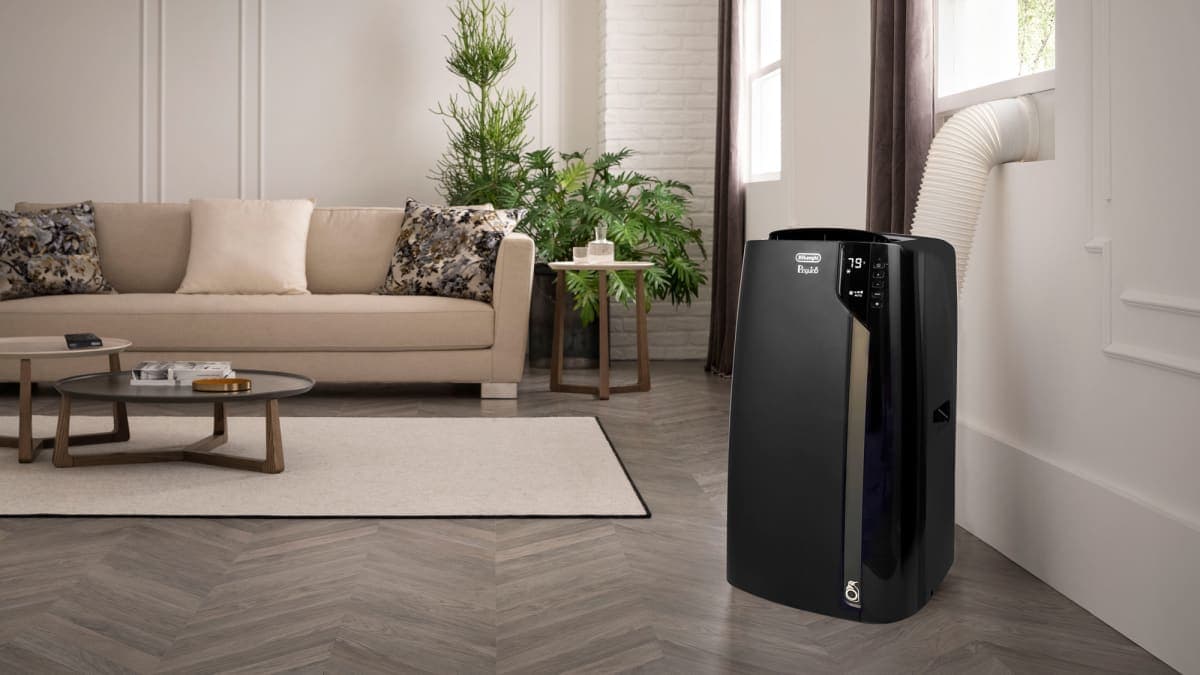
Photo credit: reviewed.com
Quick Questions Before Starting
Installing a portable air conditioner doesn't require a lot of knowledge or hands-on experience with tools. Almost anyone can do it, given a screwdriver and the proper installation kit. We have all the information about installation difficulty, time, and required materials below.
How Difficult is This to Do?
Scale: Easy
How Long Does it Take?
00:30
How Much Do Materials Cost?
$36-$220
Items Needed to Install a Portable Air Conditioner
Installing a portable air conditioner doesn't take tremendous effort. Once you have the AC unit, most of your costs are already covered. You're only going to need a few tools and some patience.
Prepare for the installation by having the following tools and materials:
An Exhaust Hose ($20-30) and a Drainage Pipe ($7-15)
These are essential venting products. Most appliances include them in the original packaging, so you might not need to buy them separately. Still, if the ones you own have tears or breaks, off-the-market hoses are available.
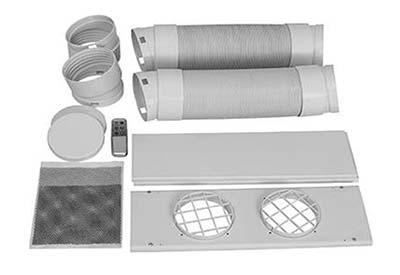


Photo credit: homeownerfaqs.com
Couplers ($15-50)
Depending on your AC model, these might also come in the box. Essentially, you're going to need two couplers: one for each end. If you want to attach another hose for length, a third might be necessary to connect the extension.
Tools
If you're not going for ceiling or through-the-wall venting, a simple screwdriver will do the trick.
A Venting Kit ($8-120)
These don't come with the unit, as they're highly customizable, depending on where you're going to install the unit (window, sliding door, ceiling, or somewhere else).
The sets usually contain some material that can block the window or a sliding door with an aperture where the hose should connect. Drop ceiling solutions cost more.
What Size Window Kit Do I Need for a Portable Air Conditioner?
The size of your window kit will depend on the type and size of your window. Once you measure the opening correctly and account for insulation materials, the product will fit easily. Some window kits need adjusting by cutting or removing sections.
Quality window kits are adjustable with screws. They usually have two fixed parts and one movable part. Product descriptions typically contain the measurements for the extended and shrunk states.
Where to Install a Portable AC
Portable air conditioners are pretty versatile when it comes to where they can be placed. A direct power outlet in close proximity to the unit should be your primary concern. While standard solutions exist, you can DIY some outlandish and ingenious fixes.
Windows
Sliding
Most units come with a handy kit to use on standard vertically-sliding windows. In most cases, the kit consists of a plate made from plastic or other material to cover the opening, leaving a hole for the hose or the adapter.
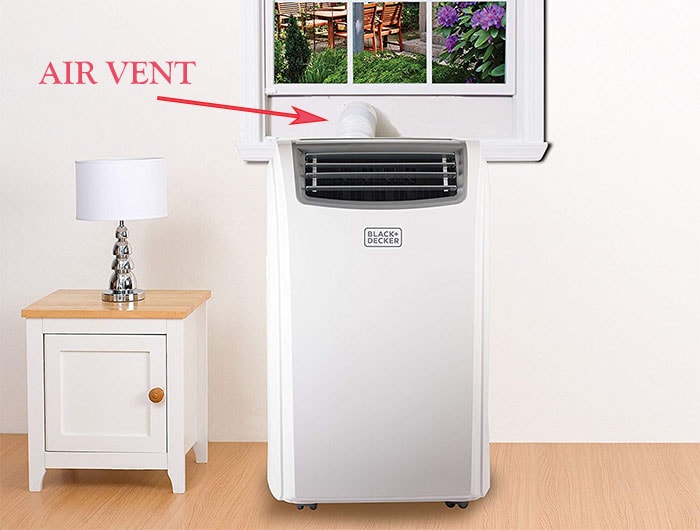


Photo credit: learnmetrics.com
Casement
As it opens outward, this window type allows you to attach the hose on a plexiglass screen frame with a hole.
Horizontally-Sliding
In this case, the length of your kit should accommodate the height of the window. It's convenient if the hose aperture is lower so you don't have to overextend it.
Awning/Hopper
These windows tilt inwards and have a triangle-shaped opening. They‘re the hardest to accommodate unless you're using a plexiglass attachment from outside.
Other Options
Sliding Door: This works the same way a sliding window does. You'll have to accommodate for the kit’s length.
Ceiling: Venting through the ceiling is a prevalent option, as you don't have to block a window. However, it has a few problems:
- Decreased portability
- Higher cost
- Longer or overextended hose
Exterior Wall: In this case, you save a window but must add a hole to an exterior wall to accommodate the hose.
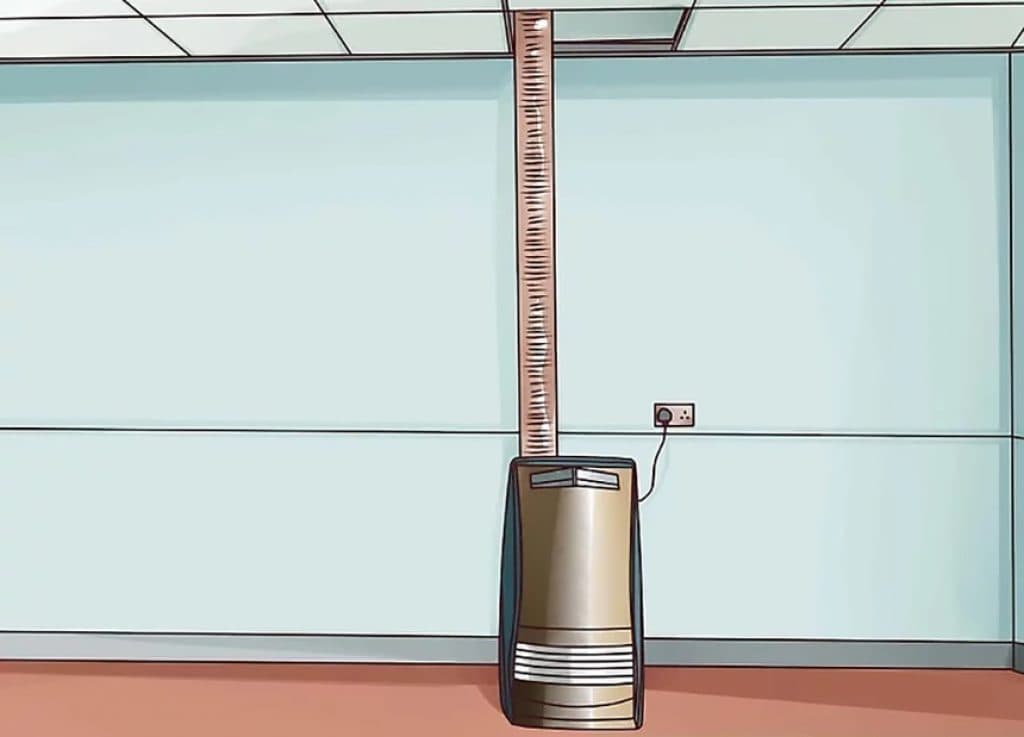


Photo credit: houseweather.org
- Chimney: This is a reasonable option if you have one. In the end, venting is the primary chimney function.
- Another Room: While this option is possible, it's not the best one. You don't have to move the hot air via a second room, making it travel and heat its surroundings in the process.
- Floor: Connecting the exhaust hose to the floor might be a good alternative if you have a ventilation system. Still, there's a risk of heating the floor and lowering the unit's efficiency.
How to Install a Portable Air Conditioner
Venting the unit via a window is one of the most popular choices for portable ACs. Follow the steps below to set up your appliance and enjoy the coolness.
1. Read the AC Manual and Prepare
Get acquainted with the instructions before you start. Keep in mind the unit's functionality and follow the safety considerations that the manufacturer points out.
Once you know how the system works, choose the spot and determine the most appropriate venting method available to you.
2. Install the Window Kit
Depending on your window type, you may need to select a specific kit. There are plenty of ready-made options that come with adjustable parts.
Fit it on your window, fasten it with screws, and close the window to check for leakages. If there's a need for extra insulation, apply foam or sealant tape.
If the kit isn't adjustable, you might need to cut off the extra piece. On the other hand, if the covering material is too short, you can use plexiglass, plywood, or other filler material to cover all the openings.



Photo credit: wikihow.com
3. Connect the Hose
Once you have the kit installed and secured, connect the hose to the AC, following the method described in the user's manual.
Connect the coupler to the other end of the hose (some window kits don't require a coupler) and snap it firmly into place. Avoid restricting the exhaust flow due to putting the hose at weird angles. For maximum efficiency, keep the hose as short as possible.
4. Connect the AC to the Power Source
Don't use extension cords or power strips to connect the unit to the electricity. It might result in overheating or even a fire.
Read the manual to ensure you follow all the setup and safety requirements. Some units might have additional buttons on the power adapter. Make sure to use them only as intended.
5. Ensure Safety and Enjoy Your Cool Room
How to Install a Dual-Hose Portable AC
Installing a dual-hose portable AC is similar to setting up its single-hose counterpart. Attach one hose into the two ports on the AC. Once they snap into place, extend both ends and connect them to the window kit or other venting hole of your choice. Ensure that the "inflow" hose can receive fresh air from outside.
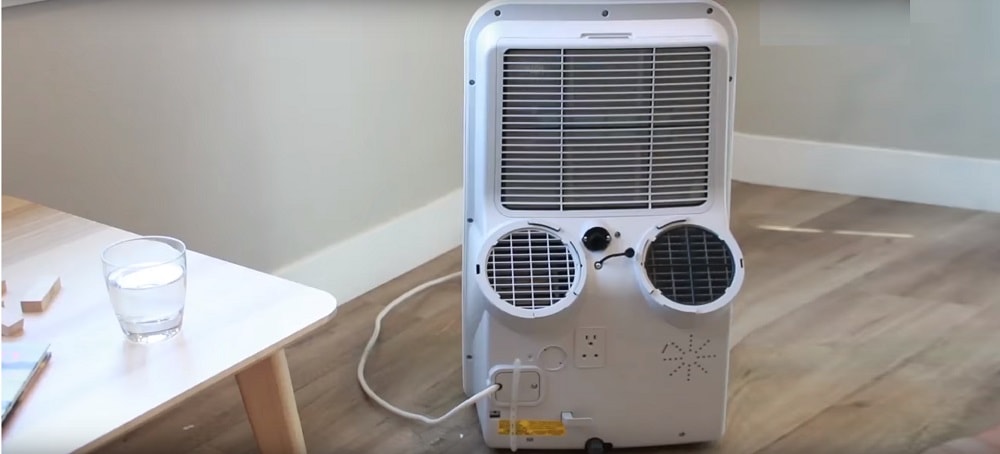


Photo credit: smartcleaningtips.com
How to Install a Portable Air Conditioner Without a Window
- Sliding Door: Using a special kit for sliding doors; attach the hose's outer end to the corresponding opening.
- Ceiling: Use a chair or small portable steps to fix the ceiling kit where needed. Next, take the attached hose with a coupler and step up to secure the coupler to the ceiling vent point. If it's hard for you to do it alone, you might need someone to give you the extended hose while you're standing on the chair.
- Exterior Wall: This can be either an intermediate or an advanced task, depending on the construction material you have to cut through while making an opening.
Cut a coupler-sized hole in the wall and push the exhaust hose out. While you can leave it like that, adding special couplers can make it look better.
- Chimney: Make sure that the chimney is open and not shared. If it has no issues, you can use a wire to secure the hose straight up as high as possible, which will help the airflow. This version might not work for dual-hose portable ACs unless you can find another venting point with constant, fresh airflow.
- Another Room: You might need to make holes in the walls to do this. Either way, the outer end of the hose should connect to an outside venting point.
- Floor: This alternative might mean a mild-to-severe construction process. Plan by studying your floor plan, venting pathways, and drilling holes in flooring.
Tips and Safety Considerations When Installing a Portable Air Conditioner
Electronics come with safety tips and considerations. Portable ACs have a few peculiarities. Let's go through each one and explain.
Fire Hazards
Experts recommend having a direct electricity outlet around the unit. Connecting the appliance via an extension cord might be dangerous. The AC may overheat or catch on fire. Find out the length of the power cord and plan the location of the appliance accordingly.
Air Circulation
You need to ensure good air circulation around the unit. As portable ACs draw the air from the room, cool it, and return a cold stream into the surroundings, you have to ensure that the flow has space to escape into the room.
Also, we recommend placing the unit at least 50 cm from the wall.
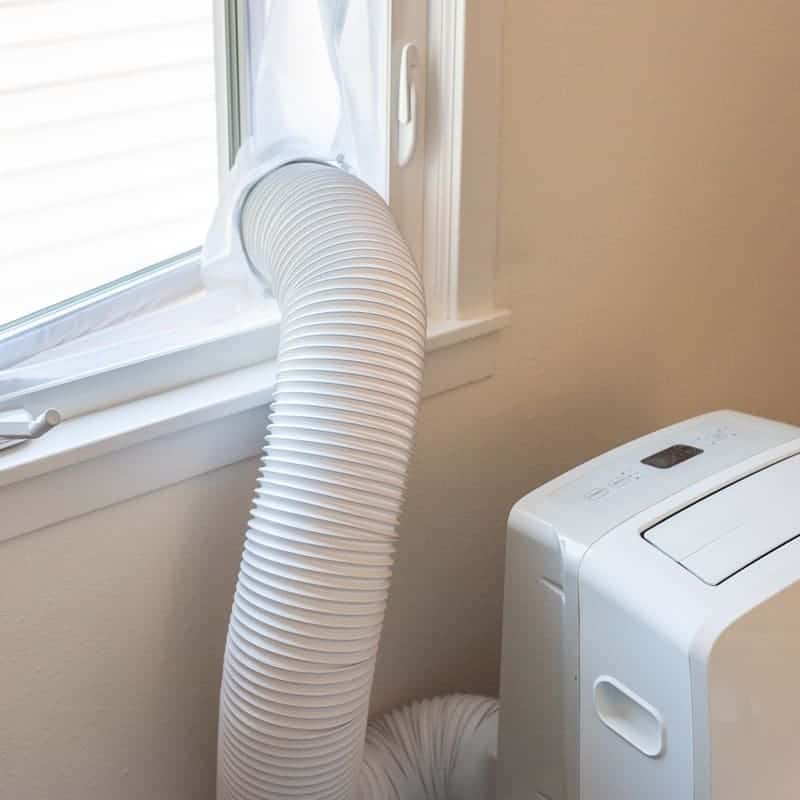


Photo credit: thehandymansdaughter.com
Drainage
Another safety consideration is to ensure proper drainage. First of all, not all portable ACs need a hose to connect to the central system. They collect the water in an internal container that needs to be emptied from time to time. Still, you need to ensure that you know how to do so.
Remove the plugs on the back and tilt the unit to get the water out. This solution can save you from dealing with drainage pipes at all. Still, connecting one can help you save time. If you do, ensure a downwards-inclined angle to allow the water out of the AC. Not emptying the unit might damage it in the long run.
Conclusion
Installing a portable AC isn't hard, and you can even do it alone. Still, depending on the venting method, you might need to plan and set aside some time, while also buying tools and materials. Once you have everything required, you'll be a step away from chilling in a cool room.
People Also Ask
Now that we've answered your burning questions about portable AC installation, here are a few others on the same topic.
Do All Portable Air Conditioners Have to Be Vented Out a Window?
All portable ACs need venting, but you can decide on the method. Venting is necessary for the hot air to leave the system, so the higher the hose’s quality, the less heat will escape through it back to the room.
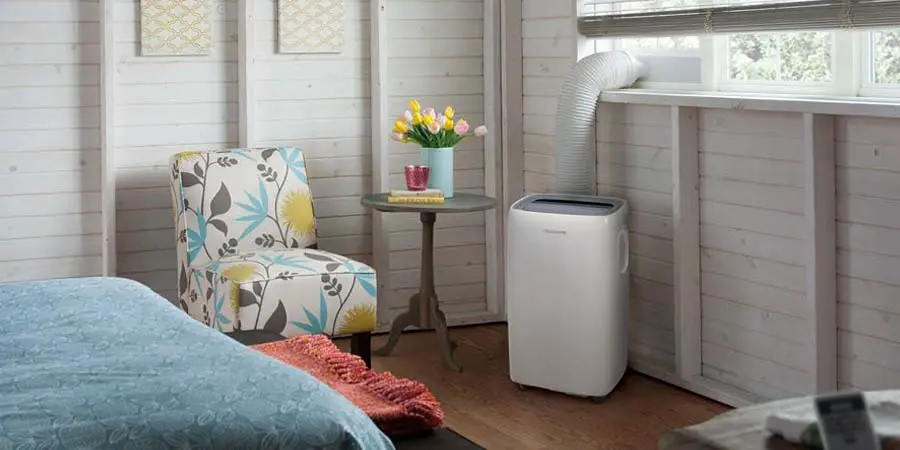


Photo credit: homeownerfaqs.com
What if My Window is Bigger than the Window Kit?
Some secondary-market products exist to solve your problem. You can obtain another similar window kit, use another material to cover the gap or search for a longer one. Going for DIY solutions is also an option.
Can You Vent a Portable Air Conditioner Through a Screen?
Window screens don't hinder the exhaust fumes, and most window kits can accommodate them. However, ensure that the unit can "breathe" properly.
